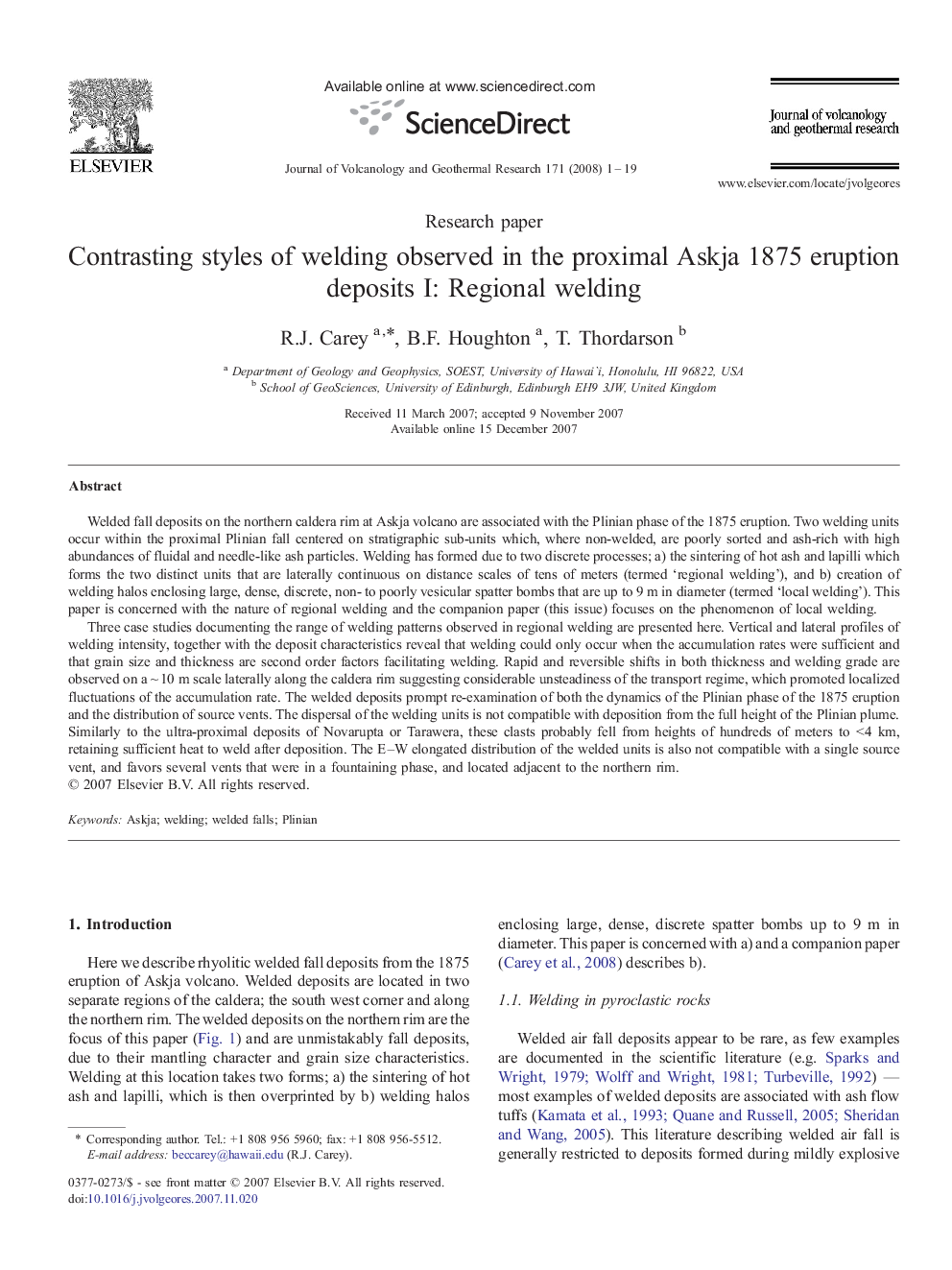| کد مقاله | کد نشریه | سال انتشار | مقاله انگلیسی | نسخه تمام متن |
|---|---|---|---|---|
| 4714895 | 1638452 | 2008 | 19 صفحه PDF | دانلود رایگان |

Welded fall deposits on the northern caldera rim at Askja volcano are associated with the Plinian phase of the 1875 eruption. Two welding units occur within the proximal Plinian fall centered on stratigraphic sub-units which, where non-welded, are poorly sorted and ash-rich with high abundances of fluidal and needle-like ash particles. Welding has formed due to two discrete processes; a) the sintering of hot ash and lapilli which forms the two distinct units that are laterally continuous on distance scales of tens of meters (termed ‘regional welding’), and b) creation of welding halos enclosing large, dense, discrete, non- to poorly vesicular spatter bombs that are up to 9 m in diameter (termed ‘local welding’). This paper is concerned with the nature of regional welding and the companion paper (this issue) focuses on the phenomenon of local welding.Three case studies documenting the range of welding patterns observed in regional welding are presented here. Vertical and lateral profiles of welding intensity, together with the deposit characteristics reveal that welding could only occur when the accumulation rates were sufficient and that grain size and thickness are second order factors facilitating welding. Rapid and reversible shifts in both thickness and welding grade are observed on a ~ 10 m scale laterally along the caldera rim suggesting considerable unsteadiness of the transport regime, which promoted localized fluctuations of the accumulation rate. The welded deposits prompt re-examination of both the dynamics of the Plinian phase of the 1875 eruption and the distribution of source vents. The dispersal of the welding units is not compatible with deposition from the full height of the Plinian plume. Similarly to the ultra-proximal deposits of Novarupta or Tarawera, these clasts probably fell from heights of hundreds of meters to < 4 km, retaining sufficient heat to weld after deposition. The E–W elongated distribution of the welded units is also not compatible with a single source vent, and favors several vents that were in a fountaining phase, and located adjacent to the northern rim.
Journal: Journal of Volcanology and Geothermal Research - Volume 171, Issues 1–2, 30 March 2008, Pages 1–19